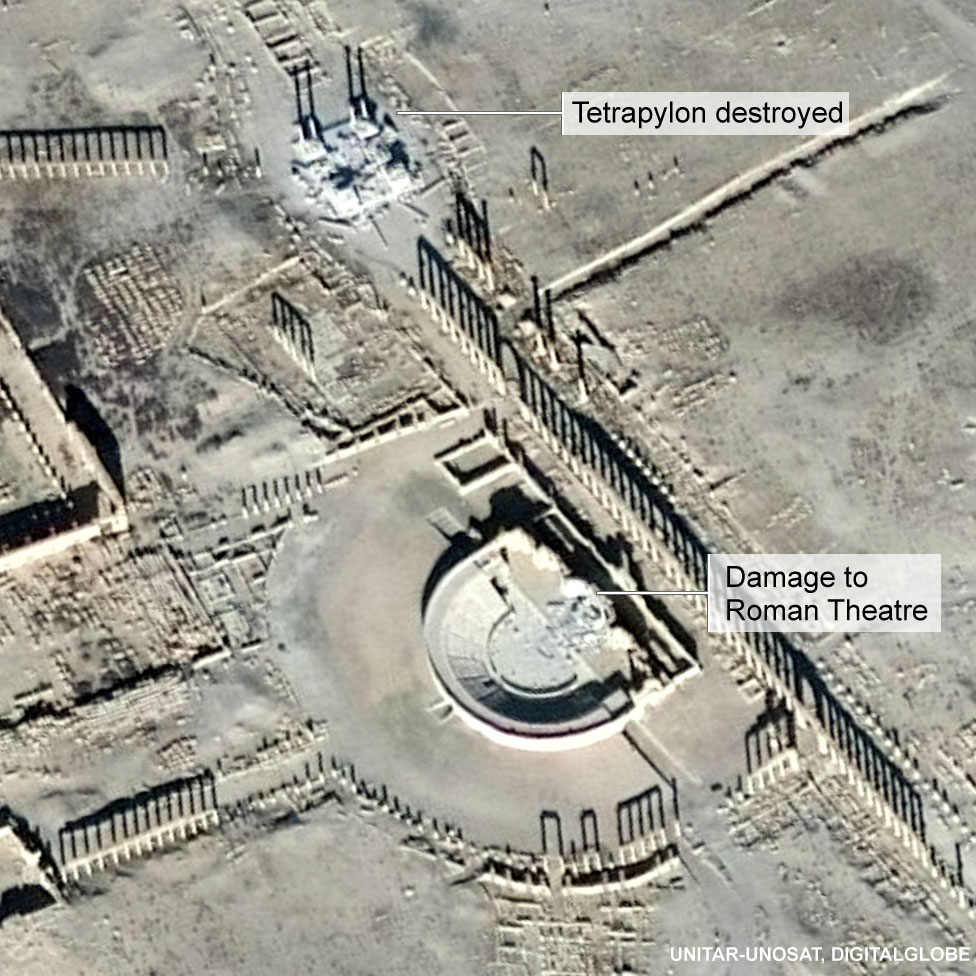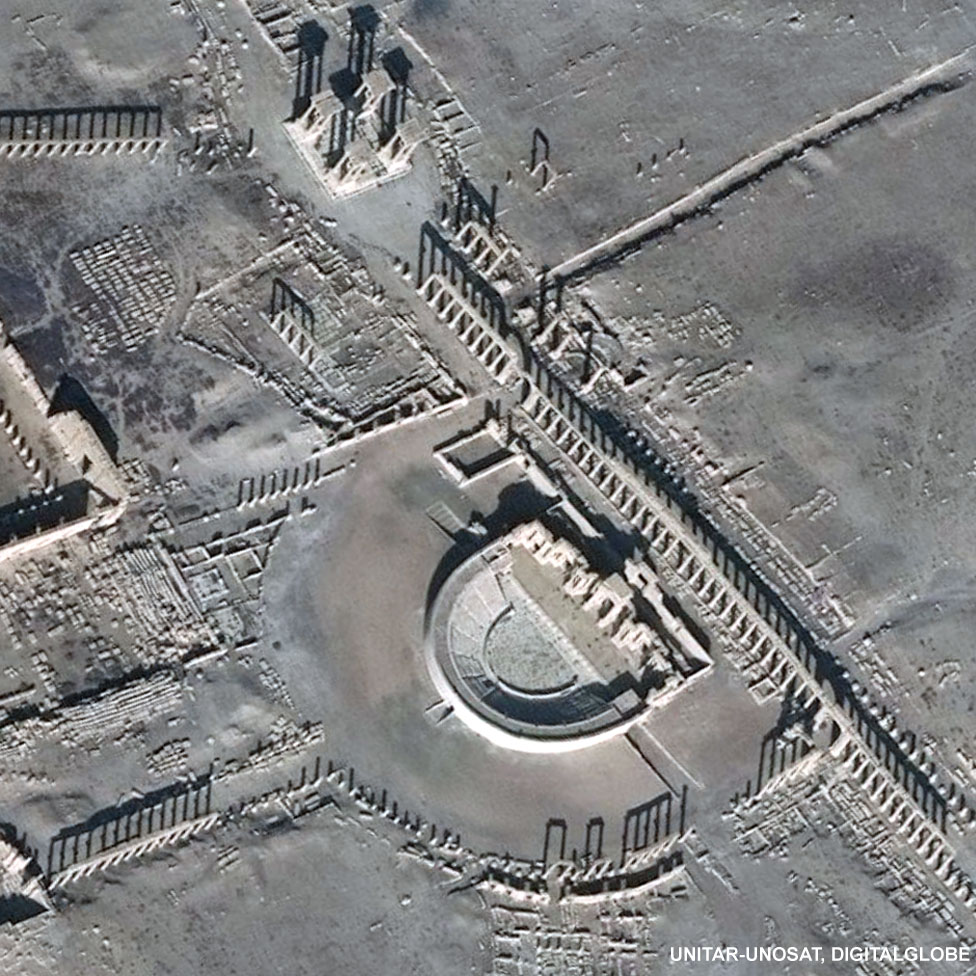Syrian government forces have entered the ancient city of Palmyra, pushing back militants from so-called Islamic State (IS), activists say.
The troops and their allies, backed by Russian air strikes, have reportedly seized part of a neighbourhood in the west of the city.
The jihadists recaptured the Unesco-listed archaeological site in December from government forces.
Parts of the ancient city have been destroyed by the militants.
There were clashes and heavy shelling across the historic city as the offensive unfolded, the UK-based monitoring group Syrian Observatory for Human Rights said.
A media unit run by the allied Lebanese Hezbollah movement said earlier that the pro-government forces had reached the citadel, which sits on a hill overlooking the famous Roman-era ruins.
The Syrian government troops also seized a strategic area known as the “Palmyra triangle”, the official Sana news agency reported.
IS held the ruins and the nearby city, known locally as Tadmur, for 10 months after seizing it for the first time in May 2015. It blew up temples, burial towers and the Arch of Triumph, believing shrines and statues to be idolatrous.
They also destroyed the Temple of Bel – the great sanctuary of the Palmyrene gods – which had been one of the most important religious buildings of the 1st Century AD in the East.
Ancient city of Palmyra
- Unesco World Heritage site
- Site contains monumental ruins of great city, once one of the most important cultural centres of the ancient world
- Art and architecture, from the 1st and 2nd centuries, combine Greco-Roman techniques with local traditions and Persian influences
- More than 1,000 columns, a Roman aqueduct and a formidable necropolis of more than 500 tombs made up the archaeological site
- More than 150,000 tourists visited Palmyra every year before the Syrian conflict
The militants were then forced out by a Russian-backed government offensive in March 2016, but regained control while pro-government forces where focused on battling for the city of Aleppo late last year.
In January, satellite images revealed that the group destroyed the tetrapylon – a group of four pillared structures which were mainly modern replicas – and part of the Roman Theatre.
Meanwhile, the US said positions held by the their allies of the Syrian Arab Coalition were bombed by Russian and Syrian aircraft near the IS-held town of al-Bab, in northern Syria.
“I believe they thought were held by ISIS, yet they were actually – on the ground – were some of our Syrian Arab coalition forces,” Lt Gen Stephen Townsend told reporters, using an acronym for IS.
Palmyra: Syrian forces ‘enter’ IS-held town}



